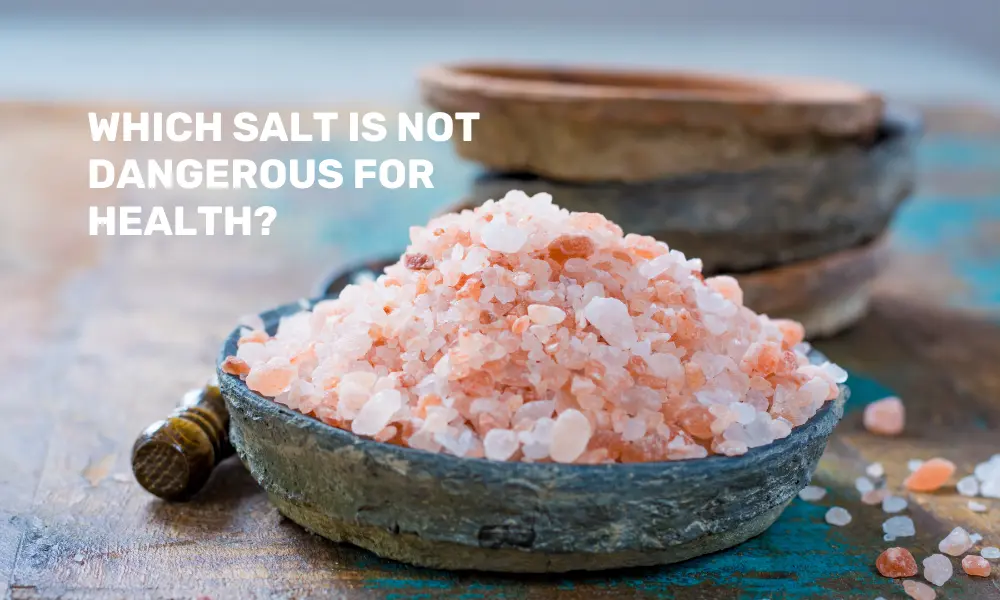When it comes to choosing the healthiest types of salt, the debate often canters on the mineral content and processing methods.
While no one type of salt can be crowned the healthiest due to their similar sodium content, some salts are favored for their additional trace minerals and less processed nature.
But first, one needs to understand why salt is important for your health. Salt is required to maintain the balance of electrolytes and fluids in the body that carry nutrients to the cells.
It helps regulate acid-base balance and supports the transfer of nerve impulses while also maintaining the body’s blood pressure.
Dangers associated with high consumption of salt
-
Raised blood pressure
-
Increased risk of heart-related diseases
-
High risk of gastric cancer
-
Obesity
-
Osteoporosis
-
Kidney disease
Types Of Salt
Not all types of salt have high health risks. There are certain types of salt that may have a lesser impact on our health. Let us closely look at different types of salts and their impact on our health.
-
Himalayan pink Salt: Pink Himalayan salt exhibits a pinkish tint and contains trace amounts of minerals like potassium, magnesium, and calcium. These minerals can contribute to the overall nutrient intake, although the amounts are too small to have a significant health impact.
-
Sea salt: Sea salts are harvested through the evaporation of sea water and they retain trace minerals from the marine source. These can offer a different flavor profile but, like Himalayan salt, do not provide substantial health benefits when consumed in typical dietary amounts. The mineral content in sea salt is considered negligible in terms of health impact.
-
Potassium salt: Potassium salts are another alternative, containing up to 70% less sodium than standard table salt. They may benefit blood pressure due to potassium’s antagonistic effects on sodium.
-
A modest reduction in dietary sodium can improve blood pressure substantially, highlighting the importance of choosing lower-sodium options for those with hypertension.
-
Table Salt: Table salt stands as the household’s predominant salt variety, sourced from seawater or salt lakes through solar evaporation. This salt undergoes extensive refinement to eliminate impurities and incorporates anti-caking agents for enhanced flow. A prevalent form of table salt is “iodized salt,” where iodine is introduced to address global iodine deficiency. This method utilizes salt as a widespread vehicle for iodine distribution, simultaneously benefiting large population groups.
It’s essential to consider that all salts contain the same amount of sodium by weight. The US Department of Agriculture recommends a maximum daily intake of 2,300mg of sodium, yet the average adult consumes much more, around 3,393mg. Therefore, moderation is key, regardless of the type of salt chosen.
Salt intake can considerably impact our health. Therefore, it is highly important to consume salt in moderation and ensure to include the type of salt that is good for health. In case of a regular incidence of high blood pressure, one must consult a doctor, monitor the BP regularly, and reduce the salt intake.
FAQ on Salt intake and health
What is the safest salt to eat?
Pink Himalayan salt and iodized salt are types of salts that are safe to consume in moderation.
Which type of salt is good for health?
Choosing iodized salt to get enough iodine. The body needs the mineral to make thyroid hormones, which control the body’s metabolism and are key for bone and brain development during pregnancy and infancy.
Which salt does not affect BP?
Himalayan salt (HS) has become a popular alternative to traditional table salt (TS) due to its health benefits for individuals with high blood pressure.
Which is the best salt for cooking?
Pink Himalayan salt and iodized salt are considered good for cooking. One may alternatively use them periodically to ensure benefits from both.





